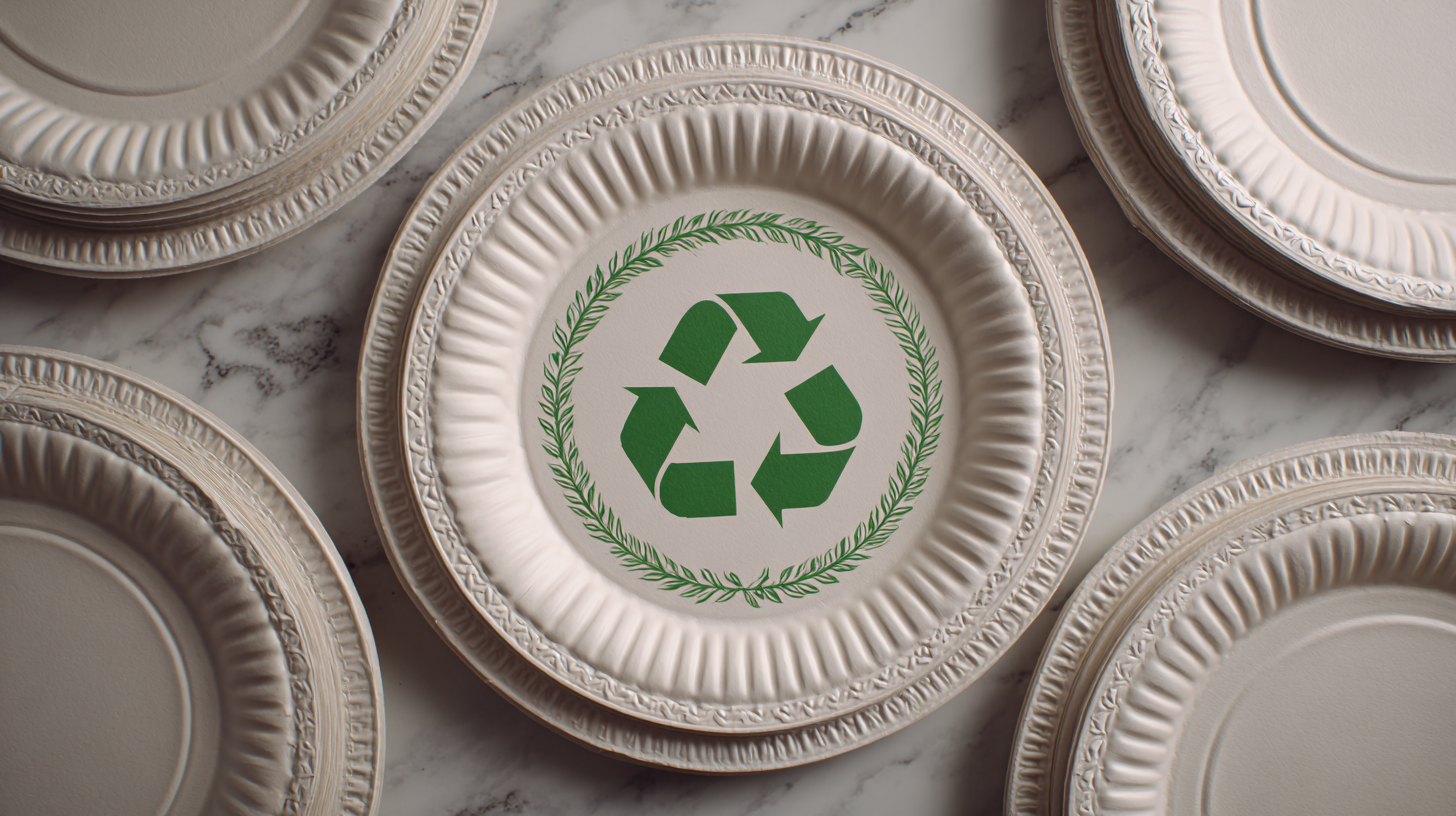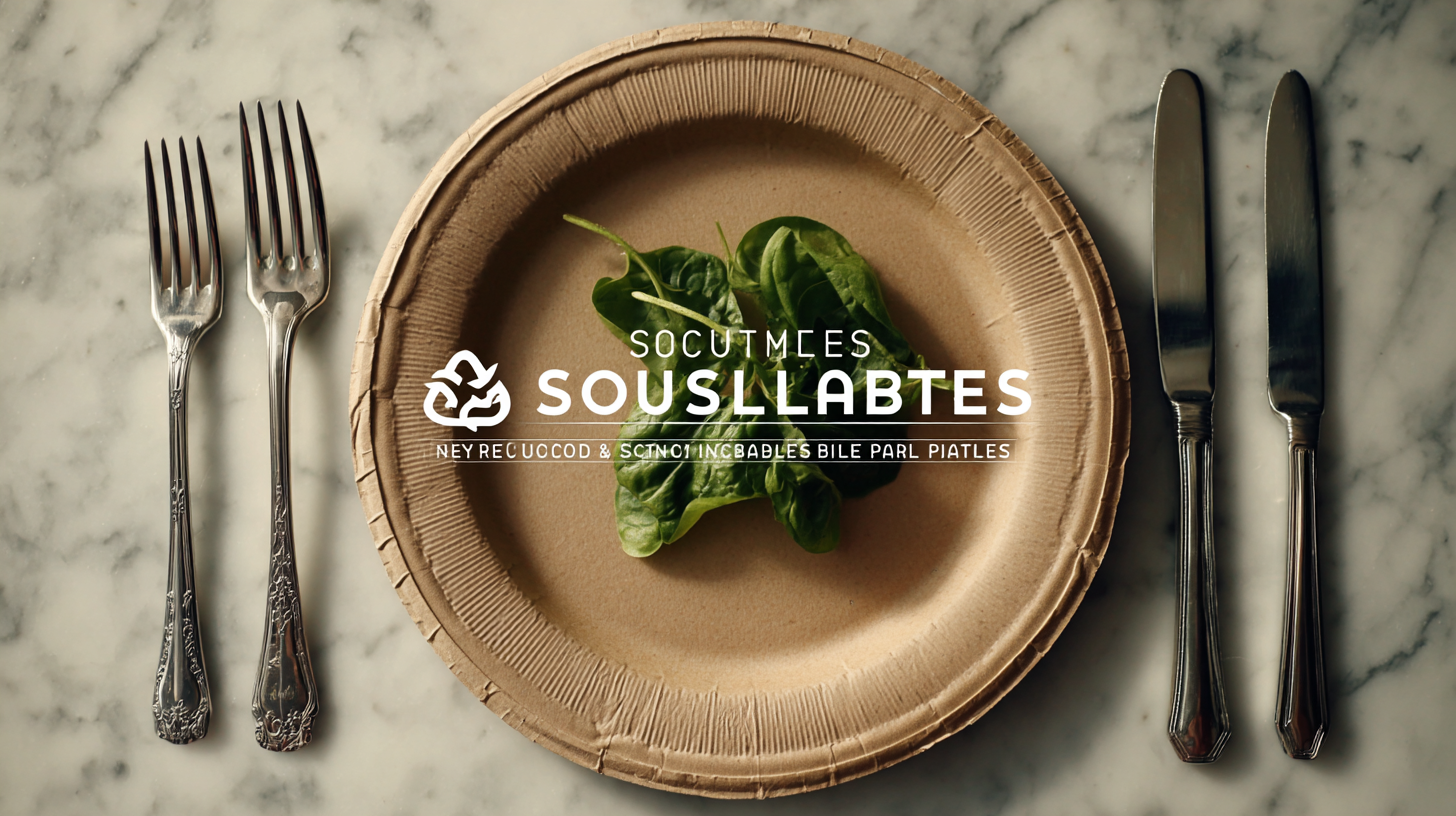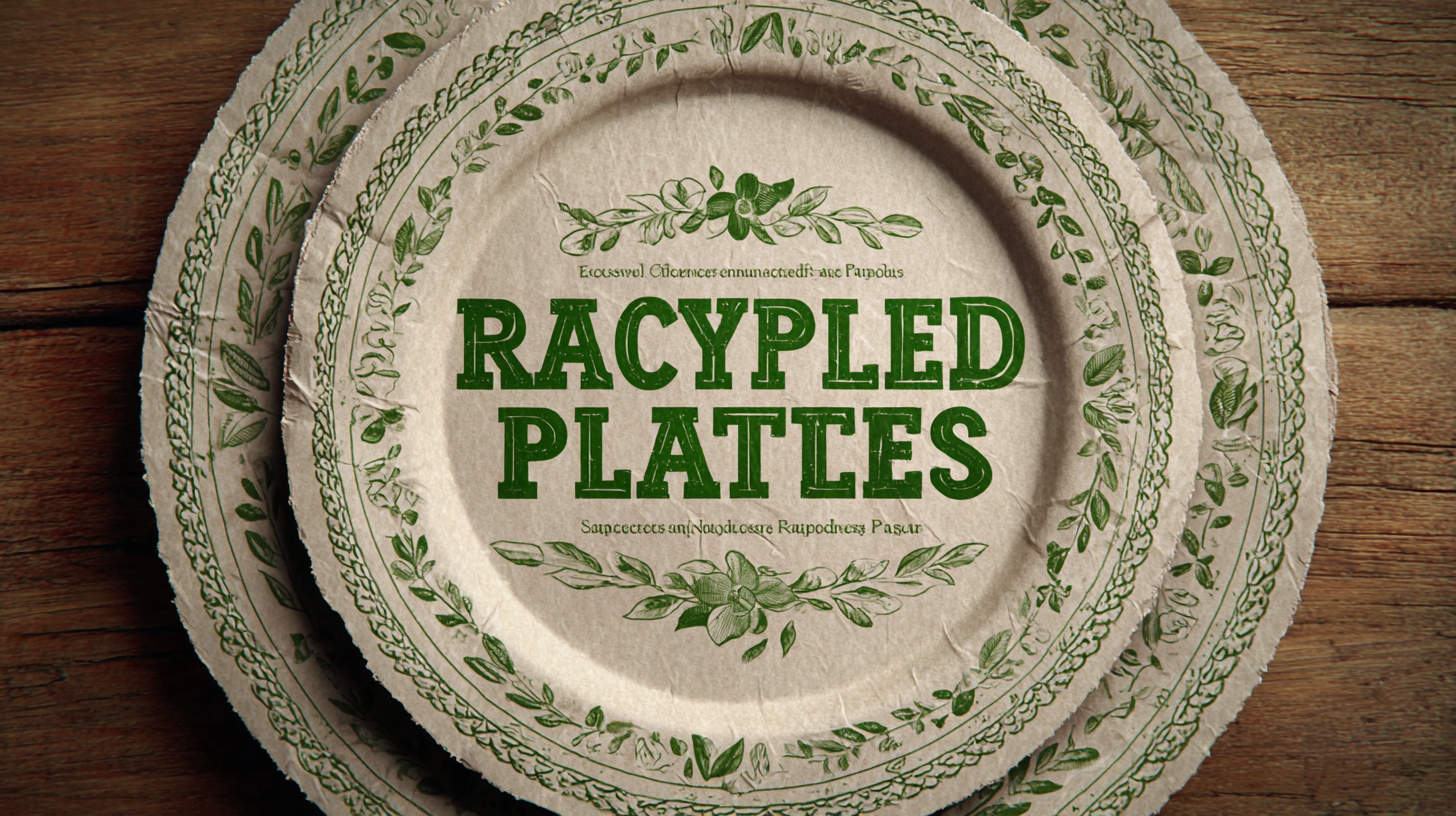Leave Your Message
In recent years, the demand for sustainable products has surged, with the global market for Recycled Paper Plates witnessing significant growth. According to a report by Research and Markets, the eco-friendly tableware segment is projected to reach $1.8 billion by 2025, driven by increasing awareness of environmental issues and the shift towards sustainable consumption. This trend is further underscored by the Ellen MacArthur Foundation, which highlights that approximately 70% of the world's paper products are made from recycled materials, yet less than 20% are recycled after use.

As manufacturers and consumers alike seek greener alternatives, sourcing the most sustainable Recycled Paper Plates has become a priority. This blog will explore effective solutions from top factories in China, showcasing how their innovations and commitment to quality have instilled global trust in their products.
In the global market for sustainable recycled paper plates, various options are emerging that cater to environmentally conscious consumers. The demand for eco-friendly alternatives is driven by a growing awareness of sustainability and waste reduction. Paper plates, crafted from recycled materials, are an excellent choice as they are biodegradable and offer an effective solution for reducing plastic waste. Key players in the industry are innovating their product lines to include not only traditional paper plates but also options made from bamboo and sugarcane, thus diversifying the market.
When exploring sustainable recycled paper plate options, consider the sourcing and production methods. Look for products that are labeled as made from 100% recycled materials and certified by recognized environmental standards. Additionally, pay attention to the certifications that ensure the plates are compostable and free from harmful chemicals.
Tips: Always check the packaging of recycled paper plates for clear recycling or composting instructions, and consider purchasing in bulk to reduce the environmental impact associated with packaging waste. Engage with brands that prioritize sustainability in their supply chain, as this can lead to more environmentally friendly practices industry-wide.
The environmental impact of disposable products is a pressing concern in today’s world, leading to a significant shift toward more sustainable alternatives such as recycled paper plates. One of the primary advantages of using recycled paper plates is their ability to minimize waste. By utilizing post-consumer materials, manufacturers reduce the need for virgin resources, thus decreasing deforestation and conserving energy. This not only lowers the carbon footprint associated with production but also diverts waste from landfills, where conventional plastic or Styrofoam plates would typically end up.
Additionally, recycled paper plates offer better biodegradability compared to their conventional counterparts. While traditional plastic plates can take hundreds of years to decompose, recycled paper plates break down naturally in a fraction of that time, making them a more environmentally friendly option for both consumers and businesses. Moreover, they support a circular economy by encouraging recycling practices and promoting sustainable sourcing of raw materials. These key environmental benefits make recycled paper plates a compelling choice for anyone looking to reduce their ecological impact while still enjoying the convenience of disposable dinnerware.

Sourcing sustainable recycled paper plates involves examining various suppliers and their sourcing practices and material quality. According to a recent report by Smithers, the global demand for eco-friendly disposable food service products is projected to reach 4.4 million tons by 2025, highlighting the growing importance of sustainability in the food industry. When assessing suppliers, key factors to consider include the percentage of recycled materials used in their products and the certifications held, such as the Forest Stewardship Council (FSC) certification, which ensures that raw materials are sourced responsibly.
A comparative analysis reveals significant differences in sourcing practices across suppliers. For example, a study published by the Environmental Protection Agency (EPA) indicates that suppliers utilizing post-consumer waste (PCW) can produce plates with upwards of 70% recycled content, resulting in a lower carbon footprint compared to conventional methods. However, not all suppliers maintain consistent quality. Research from the Paper and Paperboard Packaging Environmental Council indicates that high-quality recycled paper plates should not only meet stringent food safety standards but also exhibit durability to withstand various types of foods, ensuring they remain functional throughout their use. This underscores the necessity for businesses to critically evaluate suppliers, balancing both sustainability and quality in their sourcing decisions.
When considering the environmental impact of recycled paper plates, it is crucial to conduct a lifecycle assessment (LCA) of various brands. This comprehensive evaluation includes the extraction of raw materials, manufacturing processes, distribution, usage, and eventual disposal. By analyzing each stage, consumers can identify which brands truly minimize their ecological footprint. Key factors in this assessment involve the sourcing of post-consumer recycled paper, energy consumption during production, and the biodegradability of the finished product.
Different brands often present a varied environmental narrative. Some manufacturers prioritize eco-friendly practices throughout their production process, harnessing renewable energy sources and ensuring that their paper is sourced from sustainably managed forests. Others may utilize a higher percentage of virgin materials or rely on chemical treatments that could compromise the recyclability of their plates. By comparing these factors, consumers can make informed choices that align with their sustainability goals. Identifying brands that adhere strictly to environmentally responsible practices can lead to a more sustainable consumption pattern and foster greater industry accountability.
The demand for sustainable paper products is rapidly increasing as consumers become more environmentally conscious. Recent market research reveals that 70% of consumers are willing to pay a premium for eco-friendly products, highlighting a significant shift in purchasing behavior. This trend is particularly pronounced among younger generations, with 74% of millennials prioritizing sustainability in their buying decisions. As a result, companies in the paper plate industry are urged to adapt their sourcing strategies to meet these evolving consumer preferences.
Incorporating recycled materials into product offerings is not only a response to consumer trends but also a strategic business move. Reports indicate that the global demand for recycled paper is projected to reach 205 million metric tons by 2025, driven by increasing legislation supporting circular economy practices. This ripple effect influences manufacturers globally, prompting investment in sustainable sourcing methods and innovations. By focusing on sustainable practices, companies can position themselves favorably in a competitive market, ultimately reducing their environmental footprint while catering to a growing base of eco-minded consumers.

